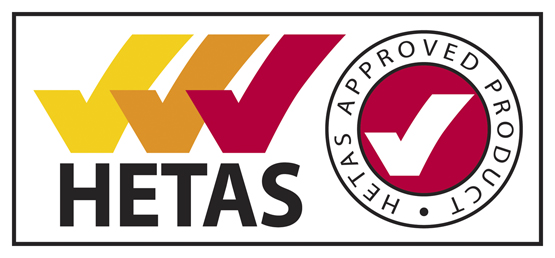Why Use The Stove Box?
With the new Clean Air Act 2022 law now in force, all new installed stoves have to be cleaner burning and be much more efficient. To comply with this new law, installing The Stove Box is the perfect solution. It has developed into a must use product when installing a stove into a fireplace opening. It ensures your stove will get hotter quicker, stay warmer longer and uses less fuel so benefiting the environment.
Designed by an HETAS installer in 2010, The Stove Box is a metal box, consisting of 2 sides, a back and a top, with an oval hole to take an adjustable collar for easier access when connecting the stove pipe to the new liner or Twinwall system.
The Stove Box can be, 1) chopped into an existing chimney breast, 2) built around with our False Chimney Breast system, or 3) is used with our Eco-spacesaver installation. With all installations The Stove Box is insulated, sides, behind and above, this cuts out heat from building inside the chimney breast, which can cause all sorts of problems and reducing heat loss which results in the stove projecting heat forward into the room.
Back in 2014 we carried out a test using a register plate install and the same test using The Stove Box. A 5Kw multi fuel stove from town & Country was used in Kiwa testing laboratory, Cheltenham. A better insulated surround would expect to result in higher temperatures on the inside of the surround and clearly reduced temperatures on the outside. This was indeed found to be the case with The Stove Box installation, giving significantly higher and lower average temperatures respectively, as illustrated below for the final test. The stove in the The Stove Box gets hotter quicker with temperature differences of about 10°C in the first few burning cycles and settles at about 5-6°C higher after sustained refuelling cycles.

Please contact us to see the full 12 page test results.

When a stove is chopped into an existing chimney breast, (this could be on an outside wall, not in a warm laboratory) using a register plate system, heat from the stove will escape into the atmosphere, not in the room. Most installers chop out an opening, buy a blank plate, cut out a neat hole for the stove pipe to fit through, seal with silicon which creates a hot spot in the breast above the plate. The Stove Box has a larger hole in the top to allow a separate adjustable collar, which has a heat gasket protecting, reducing heat transfer, creating a quicker, and safer installation. The collar is then bolted into position with sealing rope around the stove pipe, stabilising the stove and pipe. We also have a registered design on our register plates which are also adjustable.

Heat transfer also can be a problem when a false chimney breast is built. It creates a chamber to fit a stove in, in a no chimney situation, creating all sorts of heat problems. When we carried out another heat loss test, a thermocouple was placed above the register plate (approx 75mm) showing 56°C and the stove pipe was 200°C. Using The Stove Box in this situation confines the heat in the chamber, projecting more heat forward into the room not in the breast.
A recent example of why you should use The Stove Box installation, was a client who had recently built a false chimney breast using blockwork and plaster. After 10 days the plaster had cracked due to heat loss through the blockwork and breast. This would not have happened if they had used The Stove Box, as explained previously, it confines the heat. Our new Chimney Breast Kit includes The Stove Box as part of the package.

The Stove Box has changed stove fitting throughout the UK due to its environmental benefits. It is approved by building control and HETAS. Kiwa, a UKAS-accredited company, carry out testing (and often certification) on appliances, construction materials, electrical and water products. They also carry out energy monitoring field trials to carbon verification. The overall effect of the findings described will result in a householder feeling more comfortable and hotter (both quicker and ultimately) in a room with a Stove box installation than one from the same appliance burning under the same conditions in a conventional register plate installation. Assessment 13th June 2014 by Kiwa Cre 60427.
Now an Hetas approved product. See page 126 of the official guide to Hetas approved products 2018.








